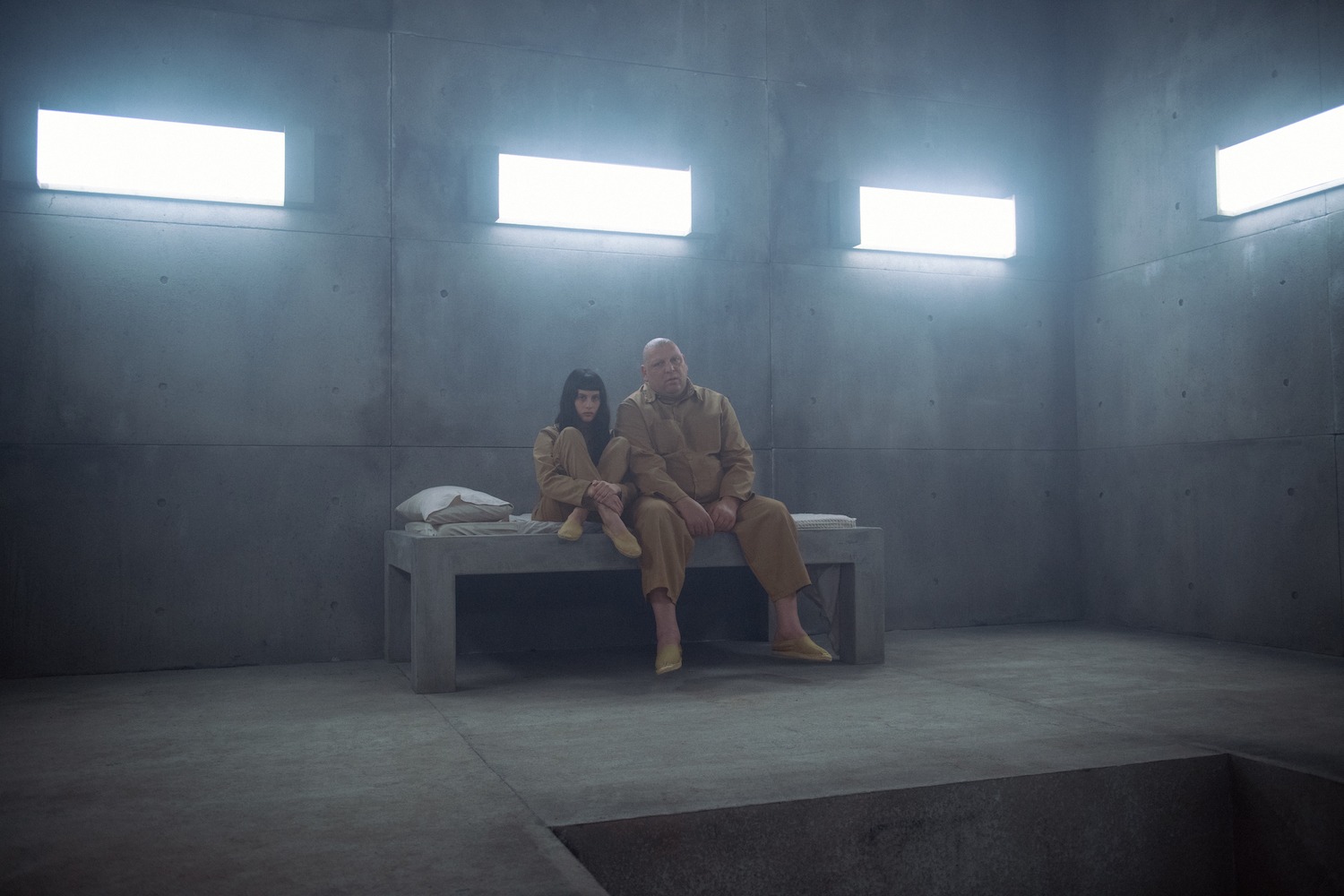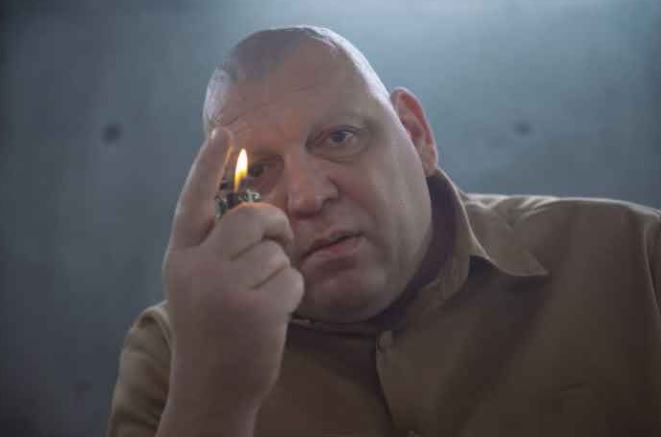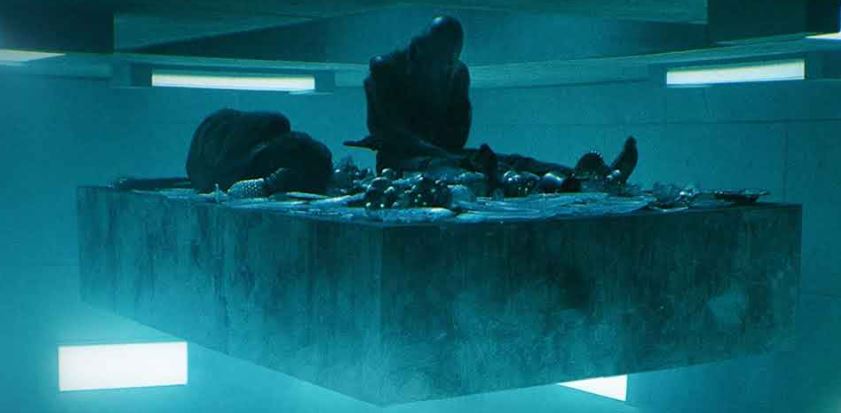The Platform 2 starts out doing exactly what a good sequel should. It plunges us, somewhat literally in this case, back into a world with which we are familiar – The Platform was a hit for Netflix in the first year of the pandemic – but puts a twist on our understanding of its core dynamic. We’re in the same 333-storey prison as the original film, where two inmates per floor have a chance to eat from a platform full of food that descends a shaft down the middle, once per day. There’s enough for all 666 inmates to eat (that number is not a coincidence), but only if each sticks to their own allotment of the food: a dish they ordered upon entering this self-selected means of serving their time. They’re here because they hope to gain their freedom sooner, but also know the experience could kill them.
Only this time, there is an extreme focus on just how the word is spread so that everyone adheres to the system. Whereas in the first film, the prisoners went hog wild on whatever food remained when the platform reached them, these seemingly more enlightened prisoners are obligated by mutual agreement – and by threats of force from fellow prisoners – to eat only their own food. They communicate this by shouting to anyone new on the floors below or above, so that no one can plead ignorance. They become more identified by what food they ordered than their names, and can only ever eat someone else’s food if it’s part of a trade agreed to in advance.
It’s this shift that makes us realise we’re in the hands of a filmmaker with a sense of intention, returning writer-director Galder Gaztelu-Urrutia. (The film is in Spanish, though Netflix has dubbing if that’s your thing.) It would have been easy just to follow two different characters through the same prison, recreating our entry point to this world from The Platform. Instead, the director is giving us a distinctly different metaphor for society. In both cases, this prison is modelling a trickle-down system of economics, but the first time suggested the horrors of that system through a capitalist lens. In The Platform 2, Gaztelu-Urrutia boldly shows us that applying socialism to the scenario involves equally dire outcomes. Perhaps even more dire.
The trouble is that the writer-director has made a film with two very different halves, and the second one falls apart in lock step with the worsening conditions inside the prison. Gaztelu-Urrutia’s ideas become increasingly clouded in abstraction, until it is reasonable to wonder if you even understand what’s going on at the film’s climax.
Beginning their time on floor 46 – prisoners get reshuffled to a new floor every month during a gas-induced unconsciousness – are Prempuan (Milena Smit) and Zamiatin (Hovik Keuchkerian). She’s chosen this sentence to help forgive herself for her transgressions, not yet known at this point, while he’s a former mathematician in the body of a sumo wrestler, who was caught trying to burn down his house with his parents still in it. They initially obey all the rules pertaining to who eats what, even though he’s infuriated that someone ate the toppings off his pizza a few levels up. But it’s when confronted with a rule he finds arbitrary that he trips up. It turns out, for any prisoners who have died, their meal must be thrown out entirely. Otherwise, there is no way to fairly decide who benefits from the extra food.
If the prisoners were just confined to their own floors, it wouldn’t be much of a social experiment. But the option to travel down on the platform always exists, with some food dishes inevitably squashed or smashed in the process. And here is where we get the violent stand-offs, the attempts to reinforce the rules, which carry with them all the implications of being trapped with fellow starving human beings – to say nothing of sacrificing a higher rung of society for a lower one.
The Platform 2 is best when exploring all the logical permutations of this new political framework, which initially profiles as a comparative utopia, representing what humans can achieve when they cooperate. Perhaps if these prisoners were philosophy students or civil engineers or political scientists or pillars of their communities, it’d really work. But they are people sent here for doing unsavoury things, and their humanity is already compromised. Add hunger to that, and it’s a powder keg waiting to explode.
Gaztelu-Urrutia does this efficiently enough and effectively enough in the first 45 minutes of his film that it leaves him having to conclude in less satisfying ways. The narrative direction of the second half is an offshoot of its first half, probably an inevitable one. But it’s not just the shortcomings and collapse of this system that makes the second half a bummer. It’s that the writer-director strays from the rules of dystopic realism, ending up somewhere more fantastical and symbolic. The concluding minutes prompt questions about what is even happening, which doesn’t seem the place this film should have ended up. Some interpretation of events also calls into question what we thought we knew from the first film, in ways that feel like continuity errors from The Platform rather than reconfigurations of our assumptions.
Horror is best when it gives a clear reflection of something recognisable about society and about ourselves. The best zombie movies do this, and The Platform 2 does it – to a point. Then it takes its eye off the ball, ending in a manner that some viewers will find provocative, but a larger number may just consider a muddle.
The Platform 2 is currently streaming on Netflix.



